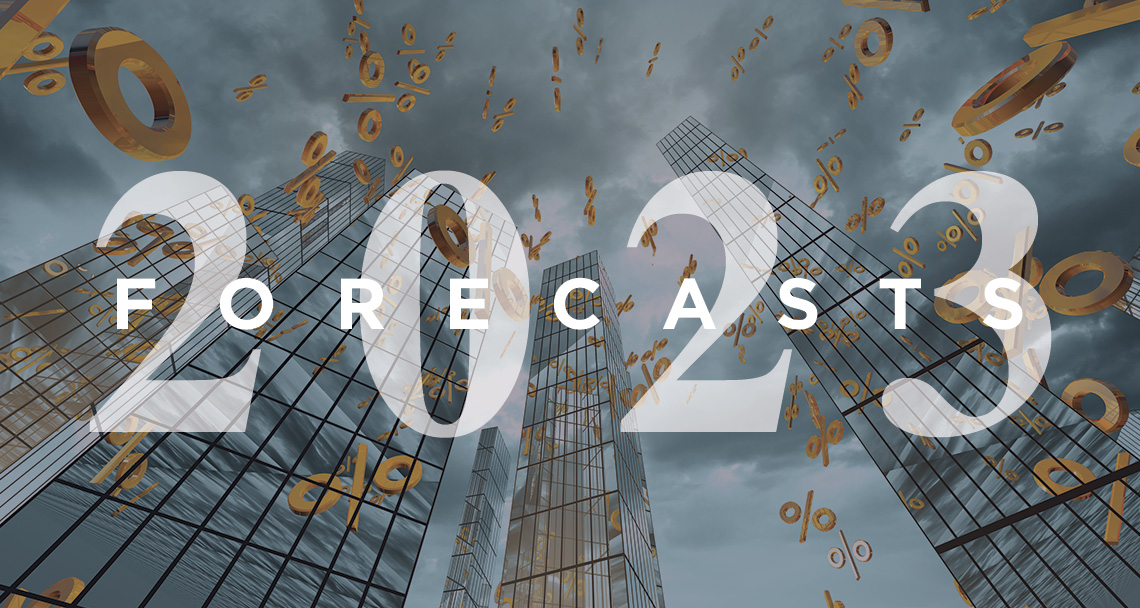No outlook for 2023 can avoid the topic of inflation. Coming into 2023 it was the overarching theme, fuelled first by the Covid pandemic and then the invasion of Ukraine.
On the one hand, there are positive signs. Easing supply chain shortages, falling commodity prices and weaker demand more generally, point to the possibility of inflation coming down rapidly in 2023.
And yet the main concern for the world’s major central banks is the pace of wage growth; tight labour markets, fuelled by a combination of strong job creation and a constrained supply of labour, are driving wages up.
Across the services sector, where labour is the principal cost to businesses, wage growth is currently too high to encourage a quick return to a target inflation.
Labour markets the pivotal factor for 2023 macroeconomics
The outlook for 2023 is therefore contingent on developments across labour markets. Central banks are shooting for the Goldilocks Zone, but pitfalls lie either side of that target.
Too much tightening and they risk crashing the economy. Too little tightening and they risk inflation becoming entrenched via the notorious ‘wage-price spiral’ – necessitating a modern-day ‘Volcker moment’ that would also crash the economy.
Given the long and variable lags in the impact of rate hikes on economic activity, finding this sweet spot in monetary policy is extremely difficult.
Their messaging reflects this dilemma; central bankers are simultaneously emphasising a “data-dependent” approach and taking it “meeting-by-meeting,” while incessantly pushing a higher-for-longer narrative on future interest rates. Clearly the two are incompatible – so expect more volatility across financial markets in 2023.
World economies set for a slow start to 2023
In the meantime, recent economic data reveals little positive momentum being carried into the new year, while sentiment-based indicators suggest a further deterioration in activity in early 2023.
The global economy is likely to fall into recession, led by Europe and North America, where the cost-of-living crisis is most acute. However, the downturn should be relatively short and shallow – assuming a relatively modest deterioration in labour market outcomes.
Overall, the global economy is expected to grow by just 1.8% next year, well short of the 3.1% average for the decade leading up to the Covid-19 pandemic.
Fortunately, there are no obvious areas of systemic distress that could turn a recession into a depression. But there are myriad downside risks; not least in the potential spillovers from the rapid tightening of financial conditions over the past 12 months and the risk of policy misjudgements.
In the words of Warren Buffet, “It’s only when the tide goes out that you learn who has been swimming naked.” Highly leveraged parts of the global economy, such as housing markets, may well fall into this category. Meanwhile the war in Ukraine will continue, and warmer spring weather won’t bring a sudden end to Europe’s energy crisis.
But there are also reasons for cautious optimism. Inflation has peaked, with interest rates set to follow suit. If inflation follows the path of least resistance, then the central bank pivot, which will support ailing economies, is still in play.
Developments in China are also positive. The authorities have eased zero-Covid rules; if managed correctly, this could prompt a strong domestic recovery and provide some impetus to global growth in the second half of the year.
However, if recent experience tells us anything, it is to expect the unexpected. Any exogenous shocks – relating to geopolitics, climate change, or, indeed, Covid-19 – will continue to wreak havoc on even the most conscientious of economic outlooks.



